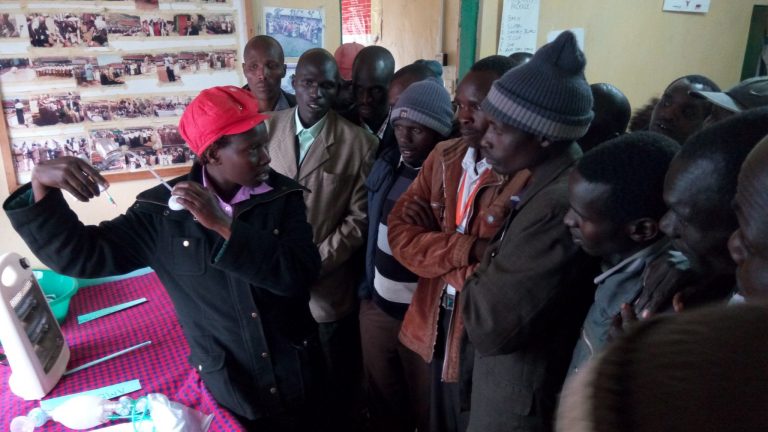By Martin Owino Omedo
Operations research manager, HealthRight International, Kitale, Kenya; and Global Health Fellow at the University of Edinburgh, Scotland
“I have never known we have such a beautiful, equipped and clean maternity [maternity wing]. Actually, I am now planning to add two more children whom I will bring by myself to be delivered in this facility.”
Those were the words of a male attendee during a maternity open day organized by HealthRight International in partnership with Elegeyo Marakwet County and Sub-county health management teams and the community in July 2016. The event took place in a model health facility supported by the USAID maternal and newborn health intervention funded through the child survival and health grant program. The event was attended by approximately 150 men and women.

While the government of Kenya introduced free maternity care in 2013 to address the issue of healthcare cost as a barrier, the uptake of skilled delivery – while improving – has never reached the optimum level, particularly in rural and hard-to-reach areas. According to the 2014 Kenya Demographic and Health Survey, only 50 percent of deliveries in rural settings are in health facilities.
The benefits of male involvement in women and children’s health are explicit, immense, and indisputable. Above all, male involvement in the health of women and children is considered a sine qua non in addressing gender influences on maternal and newborn health and increasing the uptake and acceptability of interventions needed to reduce the high maternal and newborn morbidity and mortality.
Albeit the “sweet public health moments” we have had with traditional healthcare open days, very little is understood on the feasibility of utilizing the model to promote male involvement and maternal and newborn health intervention uptake in low- and middle-income countries like Kenya.
Sensitization and advocacy are critical; we cannot get anywhere without getting into the conscience of people we are targeting – for example, local politicians, community members (men and women), and different stakeholders, whether directly or indirectly involved. Through sensitization and advocacy, we can make women and children’s health a development priority, a moral imperative, and a collective responsibility.
![IMG_20160722_160918[1]](http://www.healthynewbornnetwork.org/hnn-content/uploads/IMG_20160722_1609181-1024x576.jpg)
Strategies to address the health impacts of gender inequity have been focused on empowering women. This emphasis on increasing women’s autonomy has resulted in many documented gains for women. While this is working in principle, adopting an exclusive focus on women to address gender inequity is increasingly recognized as limited. Therefore, working with men as well as women has been recognized as key to successfully challenge and transform gender roles and norms.
To achieve maternal and child health-related Sustainable Development Goals, we need to know that business as usual will not enable us. We need to continue doing the right things in the right way. The focus should be to promote evidence-based intervention at scale across the continuum of care. We need to address maternal, newborn, and child survival through male involvement, community engagement, outreach, and promoting women’s empowerment and gender equity. We must focus on incremental gains – the ideal should not hold back the doable.
While events like this may not be the panacea to male involvement in women and children’s health issues, it nevertheless provided an opportunity to address three male involvement imperatives: 1) engaging men to challenge pre-existing roles and norms surrounding masculinity, intimate partner relationships, and parenting; 2) engaging with men and women on how to interact within relationships and thereby directly target gender relations; and 3) serving as a conduit through which to engage with and challenge patriarchal social structures and collaborate with women to reduce gender inequities.
